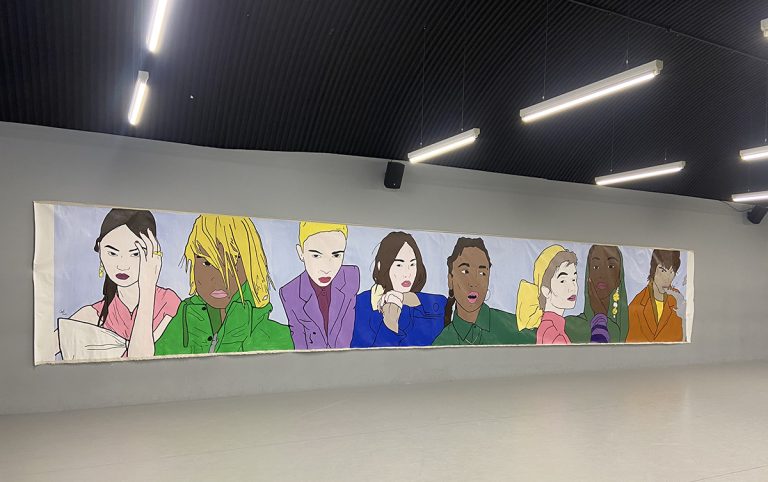Emma Coyle has spent more than 25 years painting through a lens sharpened by pop culture, advertising, and the pace of contemporary life. Born in Dublin in 1981, she first encountered the bold, brash aesthetics of American Pop Art in the 1990s—an influence that would stay with her. By 2006, she had relocated to London, where she still lives and works. Helwaser Gallery in New York represents her work and hosted her 2022 solo exhibition The Best Revenge, which ranked 12th on GalleriesNow’s list of the top 30 shows at the time.

Coyle doesn’t make art to be safe or soothing. Her paintings begin with familiar images—often pulled from current advertising—but they don’t stop at reproduction. “I have no interest in simply duplicating advertising print media imagery,” she says. “I spend months continually experimenting with colour, line, and composition.” Her approach is not about homage to the past, even though the Pop Art tradition is a clear springboard. It’s about digging into what’s happening now, through color, form, and tension.
Take Collective Selection [3], a large canvas spanning nearly ten meters in length. It’s part of her current project exploring how print media shapes our sense of beauty, identity, and immediacy. The scale alone suggests a need to confront these images head-on. But what stands out is Coyle’s refusal to let the work fall into nostalgia. “My figurative Pop Art paintings must look of their time,” she insists. “Not nostalgic.” It’s a balancing act between reference and relevance.
Her subjects are mostly women, stylized and bold, yet stripped of the commercial gloss from which they’re drawn. There’s tension between the flat colors and the volume of the figures, between the surface polish and the layered undercurrents. She pushes these contrasts until they feel almost unstable—purposefully so. “If I’m too comfortable,” she says, “it means I’m not pushing the work far enough.”
This attitude carries through her studio process, which is slow, deliberate, and full of trial and error. Coyle doesn’t rush. She works layer by layer, exploring the balance between spontaneity and structure. Years of experience allow her to veer into experimentation without losing control. There’s a discipline to what she does that pushes against the assumption that Pop Art is about surface alone.
London’s art scene has been an important part of her growth, and so have her gallery ties. In addition to Helwaser in New York, she is represented by Arte Globale in Covent Garden, Contemporary Collective at Somerset House, and The Marylebone Gallery. These connections have helped anchor her practice in both commercial and critical contexts, but again, it’s not about fitting in. It’s about the slow burn of developing work that feels urgent and personal.
Her early days exhibiting in Ireland, including her selection for the Irish National Portrait Exhibition in 2005, laid the groundwork for what would become a long-term conversation with the art world—one based less on trends and more on consistency, reinvention, and grit.
Coyle’s paintings might catch your eye with their bold color blocks and iconic silhouettes, but they keep you looking because they’re not quite settled. The figures don’t offer clarity or ease. Instead, they hold space for contradiction. Her work lives in that friction: between mass media and individual expression, between cool polish and raw gesture, between the past and the now.
There’s no sense that Emma Coyle is done with any of this. If anything, her drive seems rooted in resisting closure. The next project, the next composition—it has to feel a bit risky. Only then is it worth making.


